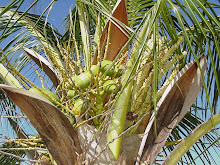The Storm Glass Barometer came into general use in the early 1700s. Sailors would attach the instrument to the mast of their ship and by the interpretation of the ever changing crystal formations, relied upon it to forecast the weather at sea.
Admiral Robert Fitzroy (1805-1865), as commander of the HMS Beagle, participated in Charles Darwin's expedition (1834-1836), and conducted a detailed study of the Storm Glass Barometer. He refined the chemical formulation and published these observational guidelines:
Clear Liquid - bright and clear weather
Cloudy Liquid sometimes with small stars and crystals at the top - cloudy weather and often predicts coming thunderstorm or rain
Small Dots in the Liquid - humid or foggy weather
Large Flaky Crystals - cloudy skies, snow in winter
Threads of Crystals at the top - windy weather
Crystals at the Bottom - frost may be coming
Fitzroy (as The Colonel and I call the Storm Glass Barometer) has large, flaky crystal formations currently. This would indicate cloudy skies.
Fitzroy is correct, as this is what it looks like outside my door as I write this post.
How the storm glass really works is a mystery, but it is believed that electromagnetic changes in weather patterns activate the crystals inside. The sealed glass tube fills with crystals when the air pressure decreases.
I do not wish to know all of the details of Fitzroy's mysterious inner workings...I just enjoy observing the changes in the crystal formations and seeing if they reflect what the weather is like outside my door.
(Fitzroy must not be placed in a hot, sunny window or in a cold, drafty location. It works best between 41 and 86 degrees. Fitzroy must also be handled with care and kept out of reach of children. The liquid inside is flammable. The liquid contains camphor, distilled water, ethanol and other trace elements).







































I wonder what it would look like in Indiana this week!
ReplyDeleteVery interesting. I, too, wonder what it would have looked like during Indiana's Polar Vortex. Jenn
ReplyDeleteThank you so much for such an informative piece of information :)
ReplyDeleteIf anyone interested similar one's have a look here
Besttoolsbrand
Thanks